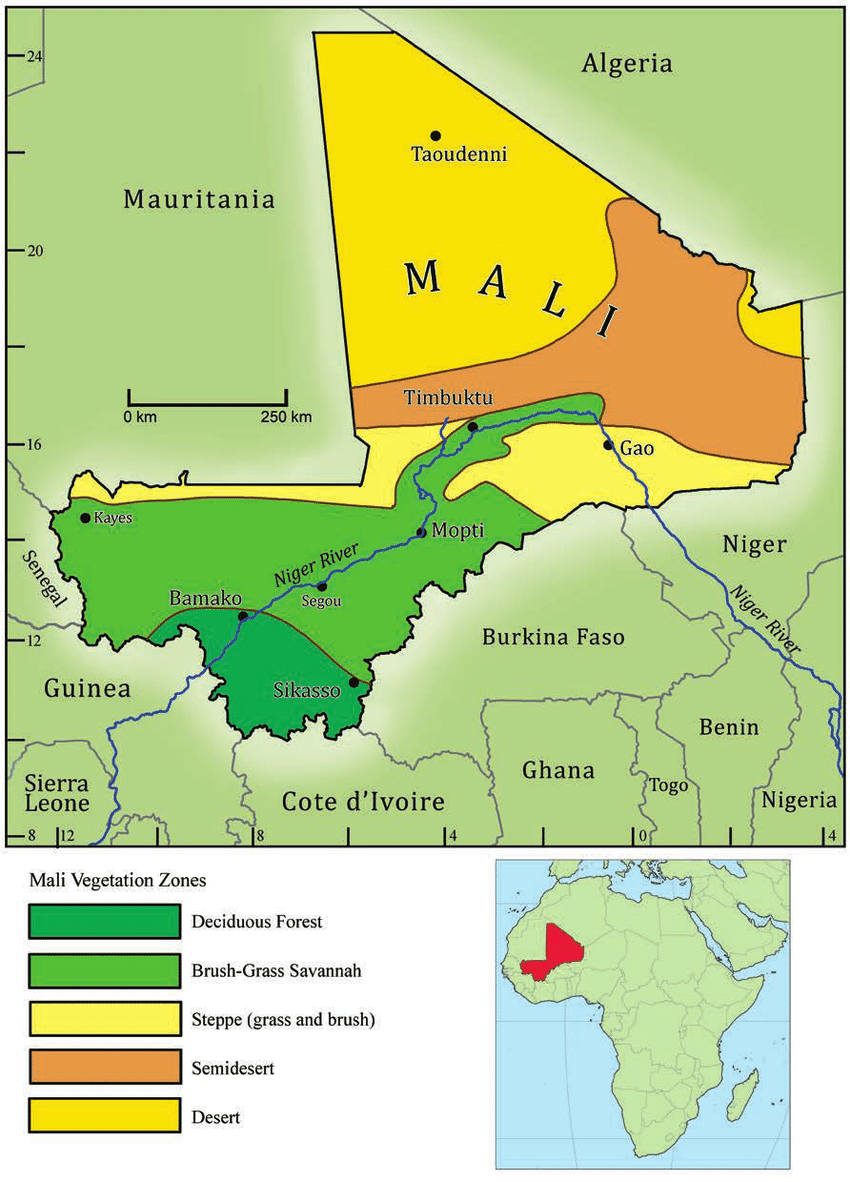Drought in Mali - Case Study
1/17
Earn XP
Description and Tags
not marley thats a dog name
Name | Mastery | Learn | Test | Matching | Spaced |
|---|
No study sessions yet.
18 Terms
type of drought
Meteorological, hydrological, agricultural, famine drought
Annual mean temperature
28-30 degrees C; high rates of evaporation
rain in Mali
short rainy season from July to September
annual precipitation averages 250-500mm
Seasonal drought occurring from october to June
contingent drought
when rainy season is delayed or absent
impacts of drought in the Sahel region
100,000 people were killed by drought in the Sahel in 1973
25% all cattle died or were slaughtered; herds in Mauritania were reduced by 80%
entirely dependent on food aid
200,000 people in Niger were entirely dependent on food aid in 1974
250,000 people were destitute in Mauritania in 1974
around 200,000 refugees arrived in Mali from Niger;
in1991,4.28 million people in the Sahel were facing starvation after the rains failed
Famine droughts
often include a cause related to civil unrest or war
80% of drylands in the sahel have faced desertification due to:
lack of rain
pressure on land
Environmental degradation due to:
over-cultivation of crops
overgrazing of range lands,
mismanagement of irrigated croplands
deforestation
climate change and desertification
Sahara desert is advancing south and east
Deforestation is a catalyst of soil erosion and albedo changes in the Sahel
forests, grasslands and savannahs play a large role in maintenance of soil
mono-crop agriculture has a far lower albedo than natural ecosystems due to gaps in land between crops
water use in agriculture
95% of cultivated land in the Sahel is rain-fed
Increased demand for crops has had negative effects on farming practice
land is not allowed to rest; becomes depleted and nutrient-scarce
there used to be nomadic pastoralists that would trade with sedentary farmers for drought resistant crops in return for meat
shift away from nomadic herdsmen
Nomadic herdsmen have been marginalised by various laws and taxes that prevent them from moving their herds
one area is over-grazed instead
food availability for animals is more sure because herdsmen can move with food and the rains
small carrying capacity of many areas in Mali is worked around
international impacts on Mali’s agricultural industry
Foreign cash crops have been prioritised in some areas despite not enough water
rural areas continue to rely on neglected traditional systems or 'modernised' systems which are not adapted to local condition
limitations of western farming in Mali
very difficult to increase carrying capacity of the land
irrigation is difficult due to water scarcity
resilience to drought in comparison to aus
less resilient to drought than aus because of smaller social safety net, lack of economic resources and governmental support
increasing demands for food
Sahel countries have young population and wide-based population pyramids
population growth is occurring
children feel the affects of hunger more acutely than adults because they are still developing
Biome distribution
more desertification as climate change progresses
